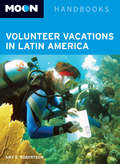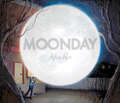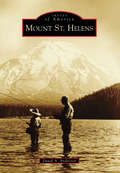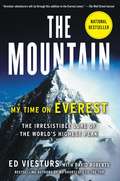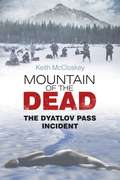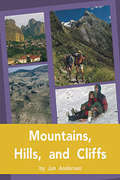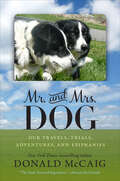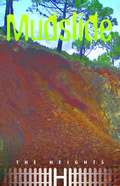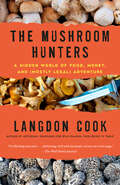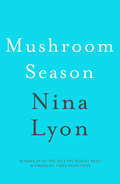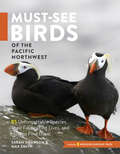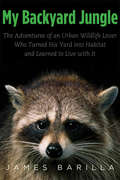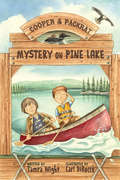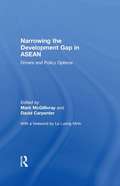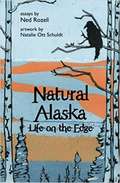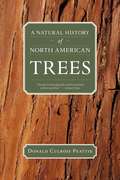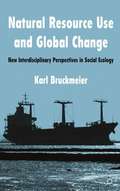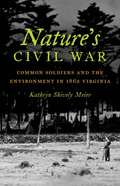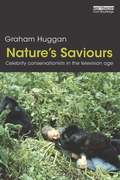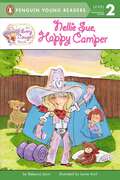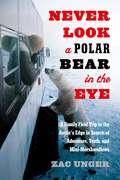- Table View
- List View
Moon Volunteer Vacations in Latin America
by Amy E. RobertsonMoon Volunteer Vacations in Latin America is the ultimate guide to the best volunteer experiences available in Latin America. Seasoned volunteer Amy E. Robertson shares her own expertise while inspiring readers to choose the right volunteer placement for their specific interests. Broken into chapters based on destination, the book gives a comprehensive overview of the best programs offered in each country and includes helpful information about housing, program costs, placement length, and much more. The countries covered include Mexico, Guatemala, Honduras, Nicaragua, Costa Rica, Panama, Colombia, Ecuador, Peru, Bolivia, Brazil, Argentina, and Chile.Robertson also shares ideas for fundraising, as well as additional sources of information on volunteering, travel, and the various destinations. From discovering the best times to go to navigating the application process to figuring out what to take, this guidebook prepares readers for all aspects of their volunteer experience, whether they're preparing a turtle hatchery in Costa Rica, teaching English in Mexico, or building a home in Brazil. Moon Volunteer Vacations in Latin America is a must-have for anyone looking to get involved abroad.This ebook and its features are best experienced on iOS or Android devices and the Kindle Fire.
Moonday (Hyperion Picture Book (eBook))
by Adam RexWhat do you do when the moon lowers itself into your backyard? When mornings are replaced by perpetual night, and people sigh-sleep in their eyes. What do you do when the tide comes in, and all the neighborhood dogs won't stop howling? You take the moon for a ride. Adam Rex creates a fantastic tale that is both imaginative and beautiful; one that blurs the line between dreams and reality.
Mount St. Helens
by David A. AndersonThe story of Mount St. Helens is that of an active volcano and human interaction with it. The mountain is culturally important to the regional native people. Its Cowlitz name, Lawetlat'la, means "Person From Whom Smoke Comes." Early European settlers saw opportunities to make a living from the natural resources, and people fell in love with the forested valleys and slopes of the glacier-clad peak with the blue lake at its foot. Forgotten were the eruptions of the 19th century and the fact that the landscape was a product of frequent violent explosions. A report from the 1970s reminded locals that Mount St. Helens is an active volcano and could erupt again before the end of the 20th century. Only a few people at that time were aware of what the mountain was capable of, and many were surprised at the events that took place in 1980.
The Mountain: My Time on Everest
by Ed Viesturs David RobertsIn national bestseller The Mountain, world-renowned climber and bestselling author Ed Viesturs and cowriter David Roberts paint a vivid portrait of obsession, dedication, and human achievement in a true love letter to the world’s highest peak.In The Mountain, veteran world-class climber and bestselling author Ed Viesturs—the only American to have climbed all fourteen of the world’s 8,000-meter peaks—trains his sights on Mount Everest in richly detailed accounts of expeditions that are by turns personal, harrowing, deadly, and inspiring.The highest mountain on earth, Everest remains the ultimate goal for serious high-altitude climbers. Viesturs has gone on eleven expeditions to Everest, spending more than two years of his life on the mountain and reaching the summit seven times. No climber today is better poised to survey Everest’s various ascents—both personal and historic. Viesturs sheds light on the fate of Mallory and Irvine, whose 1924 disappearance just 800 feet from the summit remains one of mountaineering’s greatest mysteries, as well as the multiply tragic last days of Rob Hall and Scott Fischer in 1996, the stuff of which Into Thin Air was made.Informed by the experience of one who has truly been there, The Mountain affords a rare glimpse into that place on earth where Heraclitus’s maxim—“Character is destiny”—is proved time and again.
Mountain of the Dead: The Dyatlov Pass Incident
by Keith MccloskeyThe Dyatlov Pass incident resulted in nine unsolved, mysterious deaths; Keith McCloskey attempts to decipher the bizzare events that led up to that night and the subsequent aftermath In January 1959, 10 experienced young skiers set out to travel to a mountain named Mount Otorten in the far north of Russia. Otorten translates to "don't go there" in the local Mansi language. During the trip, one of the skiers fell ill and returned. The remaining nine lost their way and ended up on another mountain slope known as Kholat Syakhl, or "Mountain of the Dead. " On the night of February 1, 1959, something or someone caused the skiers to flee their tent in terror, using knives to slash their way out instead of using the entrance. When they failed to return home, search parties were sent out and their bodies were found, some with massive internal injuries but all without external marks. The autopsy report showed that the injuries were caused by "an unknown compelling force. " Subsequently, the area was sealed off for years by the authorities and the deaths and events of that night remained unexplained. Benefiting from original research carried out in Russia, this book attempts to explain what happened to the nine skiers who lost their lives in what has come to be known as the "Dyatlov Pass Incident. "
Mountains Hills and Cliffs (Rigby PM Plus Blue (Levels 9-11), Fountas & Pinnell Select Collections Grade 3 Level Q)
by Jan AndersonMountains, Hills, and Cliffs by Jan Anderson
Mr. and Mrs. Dog: Our Travels, Trials, Adventures, and Epiphanies
by Donald McCaigThe New York Times–bestselling author Donald McCaig has established an expansive literary career, founded equally on books about working sheepdogs and the Civil War novels Jacob’s Ladder and Rhett Butler’s People, the official sequel to Gone with the Wind.In his new book, Mr. and Mrs. Dog, McCaig draws on twenty-five years of experience raising sheepdogs to vividly describe his—and his dogs June and Luke’s—unlikely progress toward and participation in the World Sheepdog Trials in Wales.McCaig engagingly chronicles the often grueling experience—through rain, snow, ice storms, and brain-numbing heat—of preparing and trialing Mrs. Dog, June, "a foxy lady in a slinky black-and-white peignoir," and Mr. Dog, Luke, "a plain worker—no flash to him." Along the way, he relays sage advice from his decades spent talking with America’s most renowned dog experts, from police-dog trainers to positive-training gurus.As readers of McCaig’s novels will expect, Mr. and Mrs. Dog delivers far more than straightforward dog-training tips. Revealing an abiding love and respect for his dogs, McCaig unveils the life experiences that set him on the long road to the Welsh trial fields. Starting with memories of his first dog, Rascal, and their Montana roadtrip in a ’48 Dodge, McCaig leads us into his thirties, when he abandons his New York advertising career to move to a run-down Appalachian sheep farm in the least populous county in Virginia. This 1960s agrarian adventure ultimately brings McCaig, Luke, and June to the Olympics of sheepdog trials. In his narration of one man’s love for his dogs, McCaig offers a powerful portrayal of the connection between humans and their animal companions.
Mudslide
by Saddleback Educational PublishingThemes: Hi-Lo, Family life, adventure, travel. These traditional reads are brimming with spirited characters and positive values--but with a little extra excitement and bite, so hold on to your hats! Written expressly for the middle grade struggling reader, the series does not contain strong language, edgy themes, or dysfunctional families. In fact, family is the main theme of these titles. And one particular Latino family is the focus with their uncanny knack for finding humor, hope, and colorful personalities--even in unusual circumstances. Written at the lowest reading levels, the 50-page story structure is straightforward and moves the reader through the text quickly and efficiently. "Mom? Mom! Can you hear me?" Lilia cried. But there was no answer. The only sound Lilia could hear were pebbles rolling down the mountain.
The Mushroom Hunters: On the Trail of an Underground America
by Langdon CookIn the tradition of Michael Pollan's The Omnivore's Dilemma, Susan Orlean's The Orchid Thief, and Mark Kurlansky's Cod--a renowned culinary adventurer goes into the woods with the iconoclasts and outlaws who seek the world's most coveted ingredient . . . and one of nature's last truly wild foods: the uncultivated, uncontrollable mushroom.Within the dark corners of America's forests grow culinary treasures. Chefs pay top dollar to showcase these elusive and beguiling ingredients on their menus. Whether dressing up a filet mignon with smoky morels or shaving luxurious white truffles over pasta, the most elegant restaurants across the country now feature an abundance of wild mushrooms. The mushroom hunters, by contrast, are a rough lot. They live in the wilderness and move with the seasons. Motivated by Gold Rush desires, they haul improbable quantities of fungi from the woods for cash. Langdon Cook embeds himself in this shadowy subculture, reporting from both rural fringes and big-city eateries with the flair of a novelist, uncovering along the way what might be the last gasp of frontier-style capitalism. Meet Doug, an ex-logger and crabber--now an itinerant mushroom picker trying to pay his bills and stay out of trouble; and Jeremy, a former cook turned wild food entrepreneur, crisscrossing the continent to build a business amid cutthroat competition; their friend Matt, an up-and-coming chef whose kitchen alchemy is turning heads; and the woman who inspires them all. Rich with the science and lore of edible fungi--from seductive chanterelles to exotic porcini--The Mushroom Hunters is equal parts gonzo travelogue and culinary history lesson, a rollicking, character-driven tour through a world that is by turns secretive, dangerous, and tragically American.Praise for The Mushroom Hunters "Like Susan Orlean in The Orchid Thief, Seattle author [Langdon] Cook shines a light on a shady subculture operating at the seam between wilderness and commerce. Like author Michael Pollan, he knows that every bite of food these days has a complex, often unsavory backstory. Like the late Hunter Thompson, he not only goes along for the ride with the shifty characters he's writing about, but drives the getaway car. After reading The Mushroom Hunters, you'll never look at a portobello the same way. . . . [A] beguiling, surprising book."--The Seattle Times "Not simply about mushrooms, this book examines human behavior, economics, food, society, and nature. In the end, readers will have learned a great deal about U.S. economic and social structures--all while being entertained and enlightened by stories of gastronomy and mushrooms. Highly recommended."--Library Journal "Intrepid and inspired."--Publishers Weekly "Uncultivated mushrooms are one of our last truly wild food; it often takes truly wild and rough mushroom hunters to bring them to our table. Cook travels and hunts with them in a riveting, crazy undertaking, told in often-poetic prose."--Shelf Awareness "Cook's sketches of these unique and idiosyncratic characters aren't always wholly sympathetic, but he makes every one of them real."--Booklist"If you've never thought of using the words 'mushroom' and 'adventure' in the same sentence, this gripping book will force you to reconsider."--Bill McKibben, author of Oil and Honey: The Education of an Unlikely ActivistFrom the Hardcover edition.
Mushroom Season
by Nina Lyon'Mushroom Season' is a ramble through magic mushrooms, mountains and metaphysics. After heavy sanctions relegated their use to a spell in the stoner wilderness, are psilocybin mushrooms about to help reframe important social and philosophical debates about our minds, and ourselves?Where do they grow? What do they do to our brains? And why are they eschewed by the bourgois? Nina Lyon introduces us to Liberty Caps and Fly Agarics, the characters she encountered as a student tripper and the differences between home-grown hallucinogens and Mexican export. Among the anecdotes and observations are chemical facts, etymological revelations and philosophical speculation. Why are mushrooms subject to social stigma? What are the good effects they might have on us? And how does illegalisation damage a culture of free-thinking and experiment? Taking apart the teenage clichés and middle-class prejudice associated with the drug, Nina Lyon provides a wonderfully entertaining history of the magic mushroom.
Must-See Birds of the Pacific Northwest: 85 Unforgettable Species, Their Fascinating Lives, and How to Find Them
by Sarah Swanson Max SmithMust-See Birds of the Pacific Northwest is a lively, practical guide that helps readers discover 85 of the region’s most extraordinary birds. Each bird profile includes notes on what they eat, where they migrate from, and where to find them in Washington and Oregon. Profiles also include stunning color photographs of each bird. Birds are grouped by what they are known for or where they are most likely to be found—like beach birds, urban birds, colorful birds, and killer birds. This is an accessible guide for casual birders, weekend warriors, and families looking for an outdoor experience. Eight easy-going birding weekends, including stops in Puget Sound, the Central Washington wine country, and the Klamath Basin, offer wonderful getaway ideas and make this a must-have guide for locals and visitors alike.
My Backyard Jungle: The Adventures of an Urban Wildlife Lover Who Turned His Yard into Habitat and Learned to Live with It
by James BarillaFor James Barilla and his family, the dream of transforming their Columbia, South Carolina, backyard into a haven for wildlife evoked images of kids catching grasshoppers by day and fireflies at night, of digging up potatoes and picking strawberries. When they signed up with the National Wildlife Federation to certify their yard as a wildlife habitat, it felt like pushing back, in however small a way, against the tide of bad news about vanishing species, changing climate, dying coral reefs. Then the animals started to arrive, and Barilla soon discovered the complexities (and possible mayhem) of merging human with animal habitats. What are the limits of coexistence, he wondered? To find out, Barilla set out across continents to explore cities where populations of bears, monkeys, marmosets, and honeybees live alongside human residents. My Backyard Jungle brings these unique stories together, making Barillaâ TMs yard the centerpiece of a meditation on possibilities for coexistence with animals in an increasingly urban world. Not since Gerald Durrell penned My Family and Other Animals have readers encountered a naturalist with such a gift for storytelling and such an open heart toward all things wild.
Mystery on Pine Lake: A Cooper And Packrat Mystery (Cooper And Packrat Ser. #1)
by Carl Dirocco Tamra WightCooper thought living at a campground would be cool. But summer's turning out to be all chores, no fun. Cooper's only bright spot is his new friend, Packrat, a guy who carries the world in his coat pockets and leaves his troubles behind. But trouble has come to the Wilder Family Campground and Pine Lake, where a family of loons is trying to build a nest. Someone is out to harm the loons. Is it the bully with a chip on his shoulder? The irritable camper with a shady past? Or the publicity-seeking reporter? It's up to the boys to figure out who, why, and how to stop the culprit - before it's too late.
Narrowing the Development Gap in ASEAN: Drivers and Policy Options
by Mark McGillivray David CarpenterAn important part of the vision of the Association of Southeast Asian Nations (ASEAN) is to ensure that the benefits of development and economic integration are equitably shared by all member states and their citizens. ASEAN’s work therefore aims to narrow the development gap between ASEAN member states (Indonesia, Malaysia, the Philippines, Singapore, Thailand, Brunei Darussalam, Myanmar, Cambodia, Laos and Vietnam) and between sub-regions within ASEAN. Written by a team of internationally recognised experts in development economics, this book communicates the latest findings on narrowing the development gap in a practical, policy-relevant way, in a format that can influence decision makers within ASEAN member states and international donors. There have been significant development achievements in many ASEAN countries over the last 20 years, but the ASEAN region continues to be characterised by significant development gaps, particularly in income. Gaps in development achievement are also seen at the regional and sub-national levels. This book offers a better understanding of development gaps, as they exist in 2012, and provides important context that can inform the strategic needs of decision makers in the ASEAN region. Due to improvements in conceptualising and measuring well-being, including through the use of multidimensional indicators, this book gives policy makers and scholars in development economics, development policy and Asian studies well-grounded insights into the nature of the development gaps within and between ASEAN countries as well as high-level policy advice on those interventions that can contribute to a narrowing of the development gap.
Natural Alaska: Life on the Edge
by Ned RozellPioneer creatures at the limits of their range do remarkable things to survive. Ned Rozell has been one of those animals living at the edge of civilization in Fairbanks, Alaska. The frogs, bats and flying squirrels that share that subarctic space are the subject of the science and natural history writer's book, illustrated by a lifelong Alaskan.
Natural Disasters and Adaptation to Climate Change
by Sarah Boulter Jean Palutikof David John Karoly Daniela Guitart Sarah Boulter Jean Palutikof David John KarolyThis volume presents eighteen case studies of natural disasters from Australia, Europe, North America and developing countries. By comparing the impacts, it seeks to identify what moves people to adapt, which adaptive activities succeed and which fail, and the underlying reasons, and the factors that determine when adaptation is required and when simply bearing the impact may be the more appropriate response. Much has been written about the theory of adaptation, and high-level, especially international, policy responses to climate change. This book aims to inform actual adaptation practice - what works, what does not, and why. It explores some of the lessons we can learn from past disasters and the adaptation that takes place after the event in preparation for the next. This volume will be especially useful for researchers and decision makers in policy and government concerned with climate change adaptation, emergency management, disaster risk reduction, environmental policy and planning.
A Natural History of North American Trees
by Donald Culross Peattie"A volume for a lifetime" is how The New Yorker described the first of Donald Culross Peatie's two books about American trees published in the 1950s. In this one-volume edition, modern readers are introduced to one of the best nature writers of the last century. As we read Peattie's eloquent and entertaining accounts of American trees, we catch glimpses of our country's history and past daily life that no textbook could ever illuminate so vividly.Here you'll learn about everything from how a species was discovered to the part it played in our country's history. Pioneers often stabled an animal in the hollow heart of an old sycamore, and the whole family might live there until they could build a log cabin. The tuliptree, the tallest native hardwood, is easier to work than most softwood trees; Daniel Boone carved a sixty-foot canoe from one tree to carry his family from Kentucky into Spanish territory. In the days before the Revolution, the British and the colonists waged an undeclared war over New England's white pines, which made the best tall masts for fighting ships.It's fascinating to learn about the commercial uses of various woods -- for paper, fine furniture, fence posts, matchsticks, house framing, airplane wings, and dozens of other preplastic uses. But we cannot read this book without the occasional lump in our throats. The American elm was still alive when Peattie wrote, but as we read his account today we can see what caused its demise. Audubon's portrait of a pair of loving passenger pigeons in an American beech is considered by many to be his greatest painting. It certainly touched the poet in Donald Culross Peattie as he depicted the extinction of the passenger pigeon when the beech forest was destroyed.A Natural History of North American Trees gives us a picture of life in America from its earliest days to the middle of the last century. The information is always interesting, though often heartbreaking. While Peattie looks for the better side of man's nature, he reports sorrowfully on the greed and waste that have doomed so much of America's virgin forest.
A Natural History of North American Trees
by Donald Culross Peattie"A volume for a lifetime" is how The New Yorker described the first of Donald Culross Peatie's two books about American trees published in the 1950s. In this one-volume edition, modern readers are introduced to one of the best nature writers of the last century. As we read Peattie's eloquent and entertaining accounts of American trees, we catch glimpses of our country's history and past daily life that no textbook could ever illuminate so vividly.Here you'll learn about everything from how a species was discovered to the part it played in our country's history. Pioneers often stabled an animal in the hollow heart of an old sycamore, and the whole family might live there until they could build a log cabin. The tuliptree, the tallest native hardwood, is easier to work than most softwood trees; Daniel Boone carved a sixty-foot canoe from one tree to carry his family from Kentucky into Spanish territory. In the days before the Revolution, the British and the colonists waged an undeclared war over New England's white pines, which made the best tall masts for fighting ships.It's fascinating to learn about the commercial uses of various woods -- for paper, fine furniture, fence posts, matchsticks, house framing, airplane wings, and dozens of other preplastic uses. But we cannot read this book without the occasional lump in our throats. The American elm was still alive when Peattie wrote, but as we read his account today we can see what caused its demise. Audubon's portrait of a pair of loving passenger pigeons in an American beech is considered by many to be his greatest painting. It certainly touched the poet in Donald Culross Peattie as he depicted the extinction of the passenger pigeon when the beech forest was destroyed.A Natural History of North American Trees gives us a picture of life in America from its earliest days to the middle of the last century. The information is always interesting, though often heartbreaking. While Peattie looks for the better side of man's nature, he reports sorrowfully on the greed and waste that have doomed so much of America's virgin forest.
Natural Resource Use and Global Change
by Karl BruckmeierBuilding on recent developments in social ecology, this book advances a new critical theory of society and nature, exploring social metabolism and global resource flows in contemporary society. Barriers to global sustainability are identified and conditions for transforming industrial economies towards new sustainable resource use are described.
Nature's Civil War
by Kathryn Shively MeierIn the Shenandoah Valley and Peninsula Campaigns of 1862, Union and Confederate soldiers faced unfamiliar and harsh environmental conditions--strange terrain, tainted water, swarms of flies and mosquitoes, interminable rain and snow storms, and oppressive heat--which contributed to escalating disease and diminished morale. Using soldiers' letters, diaries, and memoirs, plus a wealth of additional personal accounts, medical sources, newspapers, and government documents, Kathryn Shively Meier reveals how these soldiers strove to maintain their physical and mental health by combating their deadliest enemy--nature.Meier explores how soldiers forged informal networks of health care based on prewar civilian experience and adopted a universal set of self-care habits, including boiling water, altering camp terrain, eradicating insects, supplementing their diets with fruits and vegetables, constructing protective shelters, and most controversially, straggling. In order to improve their health, soldiers periodically had to adjust their ideas of manliness, class values, and race to the circumstances at hand. While self-care often proved superior to relying upon the inchoate military medical infrastructure, commanders chastised soldiers for testing army discipline, ultimately redrawing the boundaries of informal health care.
Nature's Saviours: Celebrity Conservationists in the Television Age
by Graham HugganToday's celebrity conservationists, many of whom made their reputations through television and other visual media, play a major role in drawing public attention to an increasingly threatened world. This book, one of the first to address this contribution, focuses on five key figures: the English naturalist David Attenborough, the French marine adventurer Jacques-Yves Cousteau, the American primatologist Dian Fossey, the Canadian scientist-broadcaster-activist David Suzuki, and the Australian 'crocodile hunter' Steve Irwin. Some of the issues the author addresses include: What is the changing relationship between western conservation and celebrity? How has the spread of television helped shape and mediate this relationship? To what extent can celebrity conservation be seen as part of a global system in which conservation, like celebrity, is big business? The book critically examines the heroic status accorded to the five figures mentioned above, taking in the various discourses – around nature, science, nation, gender – through which they and their work have been presented to us. In doing so, it fills in the cultural, historical and ideological background behind contemporary celebrity conservationism as a popular expression of a chronically endangered world.
Nature's Wealth
by Pieter J. H. van Beukering Elissaios Papyrakis Jetske Bouma Roy Brouwer Pieter J. H. van Beukering Elissaios Papyrakis Jetske BoumaIncreasing pressure from economic development and population growth has resulted in the degradation of ecosystems around the world and the loss of the essential services that they provide. Understanding the linkages between ecosystem service provisioning and human well-being is crucial for the establishment of effective environmental and economic development policy. Presenting new insights into the relationship between ecosystem services and livelihoods in developing countries, this book takes up the challenge of assessing these links to demonstrate their importance in policy development. It pays special attention to innovative management opportunities that improve local livelihoods and alleviate poverty while enhancing ecosystem protection. Based on eighteen studies in more than twenty developing countries, the authors explore the role of biodiversity-, marine-, forest-, water- and land-related ecosystem services, making this an invaluable contribution to research on the role of ecosystems in supporting the livelihoods of the poor around the world.
Nellie Sue, Happy Camper: An Every Cowgirl Book (Every Cowgirl)
by Rebecca JanniLike all adventurous cowgirls, Nellie Sue loves to go camping--and it's time to try her skills in the wild outdoors. But, when night falls and the woods come alive with creaking noises, these happy campers aren't so happy anymore! Nellie Sue must use her biggest cowgirl courage to make it through the night with a smile on her face.With playful, simple text and a super sweet ending, this Level 2 reader is a perfect choice for children beginning to read.
Never Look a Polar Bear in the Eye: A Family Field Trip to the Arctic's Edge in Search of Adventure, Truth, and Mini-Marshmallows
by Zac Unger"I like to go out for walks, but it's a little awkward to push the baby stroller and carry a shotgun at the same time."--housewife from Churchill, Manitoba Yes, welcome to Churchill, Manitoba. Year-round human population: 943. Yet despite the isolation and the searing cold here at the arctic's edge, visitors from around the globe flock to the town every fall, driven by a single purpose: to see polar bears in the wild.Churchill is "The Polar Bear Capital of the World," and for one unforgettable "bear season," Zac Unger, his wife, and his three children moved from Oakland, California, to make it their temporary home. But they soon discovered that it's really the polar bears who are at home in Churchill, roaming past the coffee shop on the main drag, peering into garbage cans, languorously scratching their backs against fence posts and front doorways. Where kids in other towns receive admonitions about talking to strangers, Churchill schoolchildren get "Let's All Be Bear Aware" booklets to bring home. (Lesson number 8: Never explore bad-smelling areas.)Zac Unger takes readers on a spirited and often wildly funny journey to a place as unique as it is remote, a place where natives, tourists, scientists, conservationists, and the most ferocious predators on the planet converge. In the process he becomes embroiled in the controversy surrounding "polar bear science"--and finds out that some of what we've been led to believe about the bears' imminent extinction may not be quite the case. But mostly what he learns is about human behavior in extreme situations . . . and also why you should never even think of looking a polar bear in the eye.
New And Selected Poems: 1962-2012
by Charles Simic&“It takes just one glimpse of Charles Simic&’s work to establish that he is a master, ruler of his own eccentric kingdom of jittery syntax and signature insight.&” -Los Angeles TimesFor over fifty years, Charles Simic has been widely celebrated for his brilliant and innovative poetic imagery, his sardonic wit, and a voice all his own. He has been awarded nearly every major literary prize for his poetry, including a Pulitzer and a MacArthur grant, in addition to serving as the poet laureate of the United States in 2007 and 2008.In this new volume, he distills his life&’s work, combining for the first time the best of his early poems with his later works—including nearly three dozen revisions—along with seventeen new, never-before-published poems. Simic&’s body of work draws inspiration from a range of topics, from the inscrutability of ordinary life to American blues, from folktales to marriage and war.Consistently exciting and unexpected, the nearly four hundred poems in this volume represent the best of one of America&’s most distinguished and original poets.
